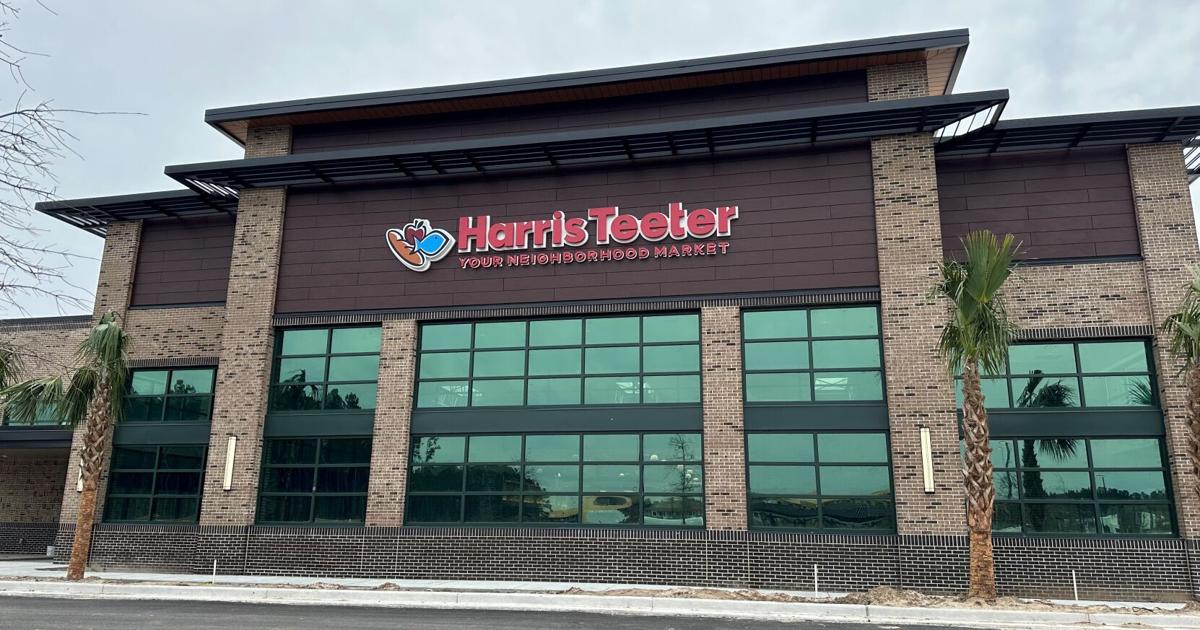Rhode Island
Apartment construction booming across US. Why not RI? | Opinion
Cliff Wood is the executive director of The Providence Foundation.
You might not realize it when driving through Providence, but apartment construction is booming throughout the United States. More units will become available in 2023 than in any year since the early 1970s. Cities ranging from Austin to Charlotte to Nashville have seen inventory growth as high as 90%. But there aren’t many cranes over our capital city. By at least one measure, the Ocean State ranks last in the nation. Why?
The problem isn’t a lack of demand. People want to live here — something that cannot be said for many other places across the country. So why haven’t developers erected more homes in Rhode Island, particularly in the places where demand is greatest, like downtown Providence? That question could elicit a range of answers, but the reality comes down to two — one economic and the other strategic.
More: Rhode Island’s housing crisis is at a breaking point. How did we get here?
The economic challenge revolves around the return a developer gets on any proposed project. Building materials are just as expensive here as they are in Boston, or on Cape Cod — concrete, lumber and the like. The cost of labor is similar as well. But the rents a developer can charge in Providence are a fraction of what he or she will get after constructing the very same unit in, say, Cambridge or Newton, which brings us to the strategic reason development is so often thwarted in Rhode Island: The Ocean State too often neglects to employ the tools that can help to level the playing field to attract investment.
Rents aren’t the only thing that bear on whether a developer chooses to add to a state’s housing supply. Tax burdens, bureaucratic rigmarole and market uncertainty also play a role. If Rhode Island could best Massachusetts on those fronts, developers would surely migrate here. But far from using these tools to level the playing field, Rhode Island is widening the gulf, incenting developers to go elsewhere and leaving renters here to pay the rising rents born from the reality that we don’t have enough housing.
Consider what’s happening in Boston and Providence today. Boston’s mayor is proposing a program that would allow developers who convert commercial buildings into apartments a 75% reduction on their property taxes — so much that, in one example, a building now paying nearly $250,000 in taxes each year would see its bill to the city drop to less than $30,000. Meanwhile, Providence’s City Council is bringing a lawsuit so that the city can renege on a tax agreement they already approved with a local developer building workforce housing downtown, increasing rates that had already been ratified by a judge.
More: Warren cut the density of a proposed housing project by 38%. Now the town wants to undo that
Put simply, the two capital cities are sending vastly different messages to builders equipped to erect more housing at a time when market conditions already favor Boston. And that’s a shame because Providence can get a lot of development done when it works cooperatively with developers. The successful and popular Farm Fresh project would not have been built if the state and city had refused to reduce the tax burden on the underlying lots.
None of these projects would have been possible without partnership between the public and private sectors — meaning financial incentives for those willing to invest in the Ocean State. But if the government treats builders as pariahs, the Ocean State will lag. When growing demand isn’t met with growing supply, rents rise for ordinary families.
It’s up to Rhode Island’s leaders to find common ground that works for the greater good.

Rhode Island
EG's RIM Best of Rhode Island Winners

Rhode Island
How to watch/stream: Rhode Island at the Little League Softball regional championship
Cranston Western Little League Softball is on the doorstep of reaching the national tournament.
The Rhode Island state champions reached the New England regional finals with a 6-5 comeback win vs. Massachusetts on Wednesday. And now the Ocean State team plays in the winner-take-all championship in Bristol, Connecticut at noon.
If you can’t make the drive to see Rhode Island’s best, you can still watch from afar.
Stream links and television information for the championship vs. Connecticut is below.
How they got there: RI is off to the Little League Softball regional title game
How to watch the New England Little League Softball championship
Date: Friday, July 26
Time: Noon
Location: A. Bartlett Giamatti Little League Leadership Training Center in Bristol, Connecticut
Stream: ESPN
Previous matchup: Rhode Island topped Connecticut, 13-3, in the opening game of the New England tournament. The Ocean State tacked on eight runs in the bottom of the fourth that broke open a 5-3 game. RI piled up eight hits and 11 RBIs in the big win.
jrousseau@providencejournal.com
On X: @ByJacobRousseau
Rhode Island
NOAA, Biden-Harris Administration announce nearly $2 million for Rhode Island project as part of Investing in America Agenda

Today, Secretary of Commerce Gina Raimondo announced that the Department of Commerce and NOAA have recommended nearly $2 million for a project in Rhode Island to make the state’s coast more resilient to climate change and other coastal hazards. The awards are being made under the Biden Administration’s Climate Resilience Regional Challenge, a competitive, $575 million program funded through the nearly $6 billion total investment under the Biden-Harris Administration’s Inflation Reduction Act.
“As part of President Biden’s commitment to combating the climate crisis, we are investing $575 million to help make sure America’s coastal communities are more resilient to the effects of climate change,” said U.S. Secretary of Commerce Gina Raimondo. “As part of this historic investment in our nation’s climate resilience the Biden-Harris Administration is investing $2 million to help underserved communities in Rhode Island develop and implement new strategies to protect themselves from increased flooding, storm surge, and extreme weather events.”
Administered by the Department of Commerce and NOAA, the Climate-Ready Coasts initiative is focused on investing in high-impact projects that create climate solutions by storing carbon; building resilience to coastal hazards such as extreme weather events, pollution and marine debris; restoring coastal habitats that help wildlife and humans thrive; building the capacity of underserved communities and support community-driven restoration; and providing employment opportunities.
“This historic funding is vital for helping Rhode Island communities confront the unique coastal challenges posed by a changing climate,” said NOAA Administrator Rick Spinrad, Ph.D. “The recommended project will empower Rhode Islanders to better prepare for climate change, fostering a more resilient, equitable future for these coastal communities.”
The recommended project in Rhode Island includes $1,999,777 for work with the Aquidneck Land Trust in partnership with the municipalities of Newport, Middletown, Portsmouth and Naval Station Newport. The project, Growing Regional Resilience Coordination on Aquidneck Island, capitalizes on the momentum of resilience initiatives already underway on the island. Committed to conserving the island’s open spaces and building on prior successful projects (including the conservation of over 2,800 acres), the land trust will use this opportunity to grow their island-wide approach to resilience, offering technical assistance, capacity building, and actionable strategies for responding to climate change. Implemented projects will include nature-based solutions to address threats from flooding, increasing storms, extreme temperatures, drought, sea level rise and water pollution.
“Coastal communities are on the front lines of climate change and face unique climate challenges – from flooding to water pollution to sea level rise. This federal funding will help the Aquidneck Land Trust and its partners work collaboratively to strengthen their collective resiliency to the impacts of climate change. I applaud their cooperative approach to mitigating the impacts of climate change for future generations and look forward to seeing the results of their work in these Rhode Island communities,” said Senator Jack Reed.
“Thanks to our Inflation Reduction Act, we’re accelerating climate resiliency across the Ocean State,” said Senator Sheldon Whitehouse, who helped shape major climate provisions included in the Inflation Reduction Act. “This federal funding will provide a big boost to resiliency and conservation projects on Aquidneck Island and help strengthen our defenses against climate change.”
“As the Ocean State, coastal management is essential to protecting our communities and our way of life from the existential threat of climate change,” said Congressman Gabe Amo (RI-01). “That is why I am proud to have joined my colleagues in supporting the Aquidneck Land Trust in their quest to receive more than $2 million in federal funding. This federal investment will help expand their island-wide approach to resilience and leverage nature-based solutions to fight the climate crisis.”
Additional information is available on the Climate Resilience Regional Challenge website.
Climate, weather, and water affect all life on our ocean planet. NOAA’s mission is to understand and predict our changing environment, from the deep sea to outer space, and to manage and conserve America’s coastal and marine resources.
-

 World1 week ago
World1 week agoOne dead after car crashes into restaurant in Paris
-

 Midwest1 week ago
Midwest1 week agoMichigan rep posts video response to Stephen Colbert's joke about his RNC speech: 'Touché'
-

 News1 week ago
News1 week agoVideo: Young Republicans on Why Their Party Isn’t Reaching Gen Z (And What They Can Do About It)
-

 Movie Reviews1 week ago
Movie Reviews1 week agoMovie Review: A new generation drives into the storm in rousing ‘Twisters’
-

 News1 week ago
News1 week agoIn Milwaukee, Black Voters Struggle to Find a Home With Either Party
-

 Politics1 week ago
Politics1 week agoFox News Politics: The Call is Coming from Inside the House
-

 News1 week ago
News1 week agoVideo: J.D. Vance Accepts Vice-Presidential Nomination
-

 World1 week ago
World1 week agoTrump to take RNC stage for first speech since assassination attempt


















